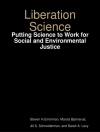Forensic analysis relates to the development of analytical methods from laboratory applications to in-field and in situ applications to resolve criminal cases. There has been a rapid expansion in the past few years in this area, which has led to an increase in the output of literature. This is the first book that brings together the understanding of the analytical techniques and how these influence the outcome of a forensic investigation.
Starting with a brief introduction of the chemical analysis for forensic application, some forensic sampling and sample preparation, the book then describes techniques used in forensic chemical sensing in order to solve crimes. The techniques describe current forensic science practices in analytical chemistry and specifically the development of portable detectors to guide the authorities in the field.
The book provides an excellent combination of current issues in forensic analytical methods for the graduates and professionals. It will cover the essential principles for students and directly relate the techniques to applications in real situations.
Jadual kandungan
Introduction to Chemical Analysis Focusing on Forensic Chemical Sensing and Detection; Forensic Sampling and Sample Preparation; Atomic Absorption Spectrometry in Forensics Analysis; Laser-induced Breakdown Spectroscopy (LIBS) in Forensic Sensing; NMR Spectroscopy Applied in Identification of Synthetic Drugs; Electrochemical Devices For Forensic Chemical Sensing; Scanning Electron Microscopy in Forensic Sensing; FTIR and NIRS in Forensic Chemical Sensing; Paper Spray Ionization Mass Spectrometry in Forensic Chemistry; Point-of-need and Portable Miniaturized Devices for Forensic Chemical Sensing; Epigenetics to Solve Crimes; Future Challenges and Point-of-view












